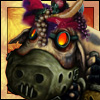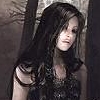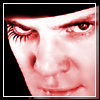Math(s)
Started by MdaG, Nov 07 2005 08:52 PM
192 replies to this topic
#181
Posted 25 November 2005 - 01:03 PM
Do you choose particular subjects to study for the HSC then? Because that question would be very easy for a dedicated maths course at age 18, but probably about right for a compulsory maths element of a more general course.
[center]
QUOTE (gregor)
also consider this - the turkey *male genital*ula is called little asia on some geographical maps maps.
I'm your solar-powered princess/Your technological soulmate.
QUOTE (gregor)
also consider this - the turkey *male genital*ula is called little asia on some geographical maps maps.
I'm your solar-powered princess/Your technological soulmate.
#182
Posted 25 November 2005 - 01:29 PM
Math was compulsory up until about 2 or 3 years ago. 2 unit is what most of the state would do, there is 3 unit which is a lot more complex and then there 4 unit, even more complex.
I did 3 unit in year 11 but my laziness really messed me up. My math teacher always said I have the mind and potential to be a good mathematician but I'm just too damn lazy. Of course he used different phrasing but that was the point he was trying to make.
And this HSC is the NSW education system every state of australia has a different system and its get confusing.
I did 3 unit in year 11 but my laziness really messed me up. My math teacher always said I have the mind and potential to be a good mathematician but I'm just too damn lazy. Of course he used different phrasing but that was the point he was trying to make.
And this HSC is the NSW education system every state of australia has a different system and its get confusing.
Edited by Iron_Scarecrow, 25 November 2005 - 01:42 PM.
#183
Posted 26 November 2005 - 10:44 PM
Heh! I don't even have math in school... 
#185
Posted 27 November 2005 - 04:04 AM
BeefontheBone, on Nov 26 2005, 12:03 AM, said:
Do you choose particular subjects to study for the HSC then? Because that question would be very easy for a dedicated maths course at age 18, but probably about right for a compulsory maths element of a more general course.
#187
Posted 30 November 2005 - 08:22 PM
Actually I did know this - I *think* it's the weighted sum of the previous digits mod 11, as a check digit to ensure the ISBN is valid. I'll check. *checks* Yup, I was right.
The first digit is (apparently) the language, the second and third are for publisher, digits 4 to 9 the book (these almost certainly vary around the world - for a start there are more than 10 languages in which books are published) and the 10th is the check digit, the inclusion of which allows the code to detect (though not correct) any single-digit error and any double-digit error where two digits are interchanged (transposition errors).
The check digit is indeed the weighted sum of the previous 9 digits calculated modulo 11 (i.e. it's the sum over i running from 1 to 9 of the terms i*d(i) where d(i) is the i-th digit). The Xs in ISBNs are treated as having value 10, since the ISBN code is based on the field Z11, the integers {0, 1, 2, 3, 4, 5, 6, 7, 8, 9, X} with addition and multiplication calculated modulo 11.
To pluck an example off my bookshelf, the ISBN on Douglas Adams and John Lloyd's The Deeper Meaning of Liff is 0-330-32220-6: it's in English, published by Pan, and has check digit 6, which is equal (mod 11) to (1*0) + (2*3) + (3*3) + (4*0) + (5*3)+ (6*2) + (7*2) + (8*2) + (9*0)
(this sum comes to 72, which is indeed 6 mod 11).
Incidentally, it is maths-related - at least, I learned this in a Coding Theory course
As an exercise for anyone who fancies it, prove that the code can detect any single-digit error and any two-digit error caused by transposition.
The first digit is (apparently) the language, the second and third are for publisher, digits 4 to 9 the book (these almost certainly vary around the world - for a start there are more than 10 languages in which books are published) and the 10th is the check digit, the inclusion of which allows the code to detect (though not correct) any single-digit error and any double-digit error where two digits are interchanged (transposition errors).
The check digit is indeed the weighted sum of the previous 9 digits calculated modulo 11 (i.e. it's the sum over i running from 1 to 9 of the terms i*d(i) where d(i) is the i-th digit). The Xs in ISBNs are treated as having value 10, since the ISBN code is based on the field Z11, the integers {0, 1, 2, 3, 4, 5, 6, 7, 8, 9, X} with addition and multiplication calculated modulo 11.
To pluck an example off my bookshelf, the ISBN on Douglas Adams and John Lloyd's The Deeper Meaning of Liff is 0-330-32220-6: it's in English, published by Pan, and has check digit 6, which is equal (mod 11) to (1*0) + (2*3) + (3*3) + (4*0) + (5*3)+ (6*2) + (7*2) + (8*2) + (9*0)
(this sum comes to 72, which is indeed 6 mod 11).
Incidentally, it is maths-related - at least, I learned this in a Coding Theory course
As an exercise for anyone who fancies it, prove that the code can detect any single-digit error and any two-digit error caused by transposition.
[center]
QUOTE (gregor)
also consider this - the turkey *male genital*ula is called little asia on some geographical maps maps.
I'm your solar-powered princess/Your technological soulmate.
QUOTE (gregor)
also consider this - the turkey *male genital*ula is called little asia on some geographical maps maps.
I'm your solar-powered princess/Your technological soulmate.
#188
Posted 30 November 2005 - 09:14 PM
Uhm, sort off on-topic to the slightly off topic stuff...
Whats an ISBN code?
Whats an ISBN code?

Meep?
#189
Posted 30 November 2005 - 09:21 PM
it's an "unique" number they put on books.
#190
Posted 30 November 2005 - 09:34 PM
Not unique for every single book, you understand, but unique for every publication (it's not just books y'see, but other published stuff).

#191
Posted 30 November 2005 - 09:51 PM
R Havell, on Nov 30 2005, 09:34 PM, said:
Not unique for every single book, you understand, but unique for every publication (it's not just books y'see, but other published stuff).
I knew about the meaning of the other digits (I've worked at a bookshop for several years), but I never could figure out how you can actually use the check digit to checks whether the other digits are printed correctly. (Obviously those scanner thingies do that for you.) Anyway, thanks, Beef.




















